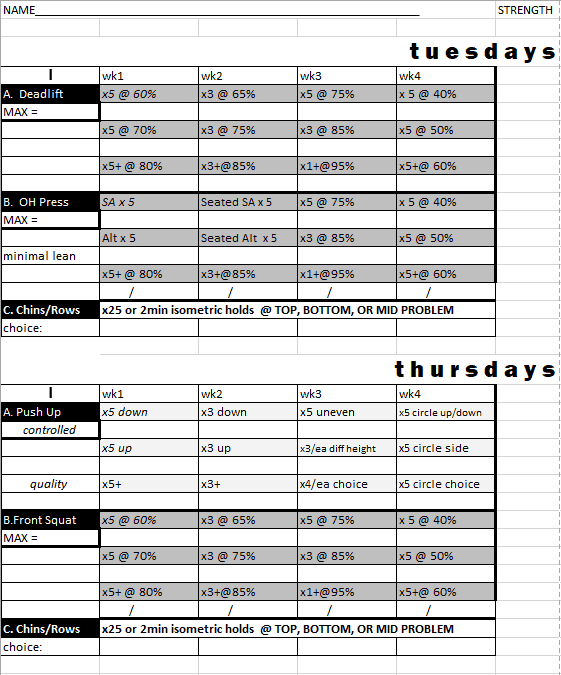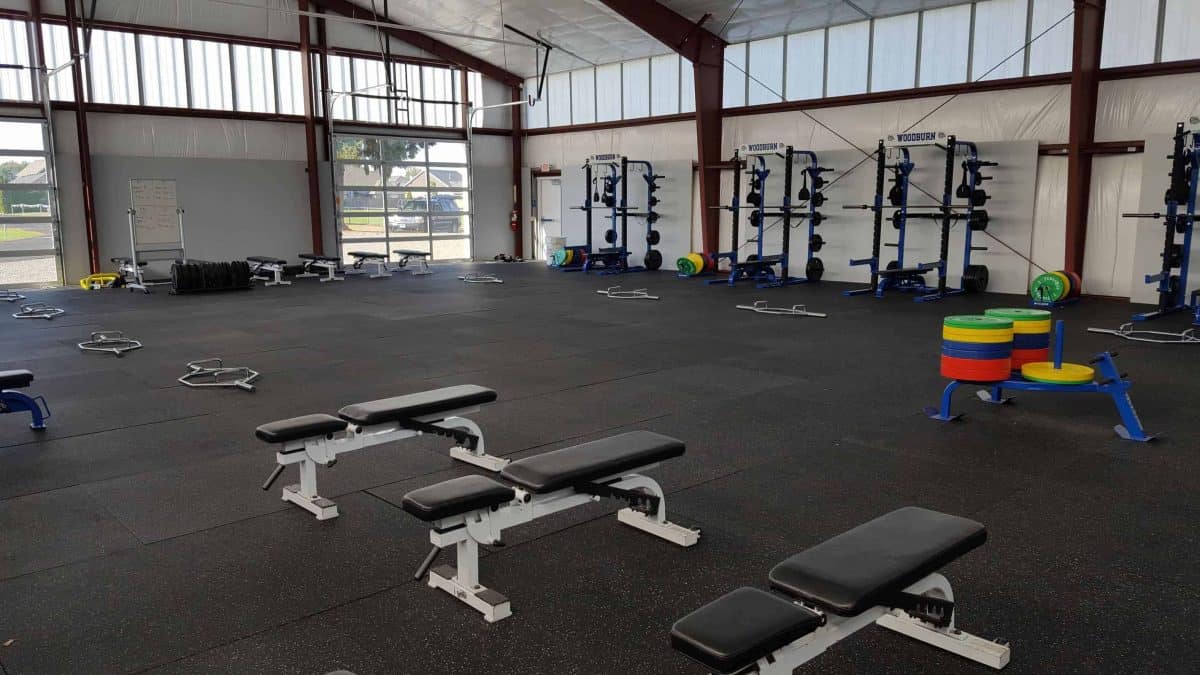A PE teacher on one side of the country texts her trainer pal on the other:
“I was thinking of getting this textbook for my weightlifting class.”
“Why do you need a textbook?”
“So I have something to reference and know what to tell the kids.”
She sent a link to an expensive behemoth of a book from a guy I had never heard of. (I wondered if male teachers searched for such resources, and if any had been written by women.) Starting Strength and Dan John were quickly considered as potential replacements, but the usefulness of these resources posed some interesting questions. Was there a go to person for the basics? Is the goal/carrot of the class aesthetics or performance? Why not offer up a sampling of several methods and let the kids decide which suits them best?
Even with a multifaceted approach, the given perspectives which you choose to expose them to are filtered through your personal experience. You only know what you now and have predisposed projections of what you feel is true/correct. Furthermore, what you are currently interested in will often bleed into what you think they are interested in. The same goes for motivation.
Convergence between leader and led is rarely an actual point of compromise. Options are what lay the path to bridge the gap. If you are right about where they are and have purpose for where you hope to get them, they deserve to be let in on the process. Discernment and decision-making are foundational for critically thinking minds. They dictate whether a strong work ethic will be put to most use.
Without offering choice, you rob them of the opportunity to develop intelligent judgement.
The process of having ownership over your experience starts with recognizing what to pay attention to. Pointing out differences between movements is a logical place to begin.
Contrast is our primary principle of study. The squat versus the hinge, for example. On a hinge, the hips should go back, and on a squat they should be pulled straight down. Foot width matters. Chest up versus chest down matters. Where the weight starts (on or off the body, rack or floor) and finishes matters. Whether or not they can touch their toes and move their hips to do so matters.
The following sequence is taught before we even enter the weight room:
Details are discussed between each sequence, as necessary. Basic premise – butt back to wall = hinge, keeping butt off wall and dropping it down as low as possible = squat.
Weight lifting should be prefaced on a baseline level of movement knowledge. Getting stronger is not the cure all it is made out to be. It helps those already athletically coordinated, but it can be detrimental to those coming in with stiffness and mobility issues. The ‘more is better’ mantra that permeates so many weight rooms perceives quantifiable load as a translation of ability, a what that dismisses the how.
To combat this, emphasis is placed on variability. Before we measure how much they can press, I ask them to explore how many ways they can pick up an object and put it overhead. How does a bar differ from a ball? Where do you stand in relation to the object? Where do you naturally grip and how many hands do you use?
Internal awareness stems from noticing to your tendencies. Before offering any instruction, I make use of the body a brain game. The hope is that they can make the task more easy or difficult through method, not just weight adjustment.
They are shown different hand and foot placements for the deadlift – traditional, sumo, and hexbar – and are given the freedom to choose the one that suits them best. They get to experience back, front, and overhead squatting, and how the position of the load changes stability demands. No where is this more apparent than carries — another of our first week focuses.
Load gives the neuromuscular system tensioned feeling. This is weight training’s biggest asset.
Feedback and sensation are entwined in immediacy. Load generates tension based on position and gravity, and creating leverage to move it is the lesson at hand. The science of weightlifting is a science of experimentation. Promoting inventiveness fuels the cycle of inquiry.
Concerning form and mitigating injury, we cannot forget that nobody wants to hurt themselves. When not fueled by ego, a self-limiting factor kicks in. To insist something is dangerous provokes fear and avoidance. A potential and possibility gets lost. The laws of physics and biodynamics will reign in their imaginations naturally.
Tuesdays and Thursdays are weight training days. The rest are reserved for sports/ games and general movement. In the five weeks leading up to the start of our first lifting cycle, the ten days looked like this:
- Open Play and Observe and have conversations
- Hangs and Quadraped/Top of Push Up – scapular separation, Horizontal vs. Vertical Presses/Pulls
- Squats and Carries, showing, explaining principles, then letting them experiment
- Hang, Push, Carry, Squat. 3 – 10 reps x 4 rounds (their first foray into programming workload) — The whys of order given are explained
- Same four movements, organized in any set and rep scheme students choose
- Deadlift intro – sumo, hex, traditional; note preferred
- Deadlift Maxes
- As many ways as possible get an object from the ground to overhead, strict OH Press Max
- Front Squatting Max — Explain why front squat is chosen version: ab engagement, upright torso
- Calculations based on Maxes
They are given a short program with loose structure to further individualize. Jim Wendler’s beautifully simple 531 template was modified to include some variability:

I replaced the bench with the overhead press because I feel it is a truer test of full body strength. Body weight push ups, taught through hollow body and progressive/ regressive feet or hands elevated, takes upon the role of horizontal push. Long body chins/rows, again modified through gravity angles, are performed every day because that is always the biggest group weakness. Please note they get to choose whether they want to work for reps or time, and can divvy up their workload any way they want. [The (+) stands for as many as possible.]
Having kids do their own calculations is worth the time and effort. It’s one more step in letting them own their process and planning, so they can fully own their results. The given strength cycle will be followed up with ones emphasizing endurance, stability, and power. With each, more space will be offered to create something unique to their interests and needs. A gradual release of responsibility affirms that self-care is ultimately in the student’s hands, and that our role is to equip them to thrive when set free.

